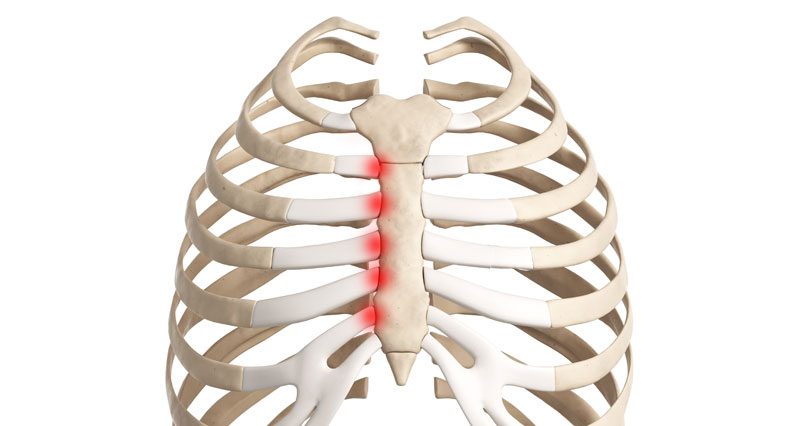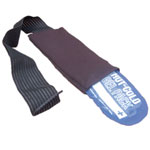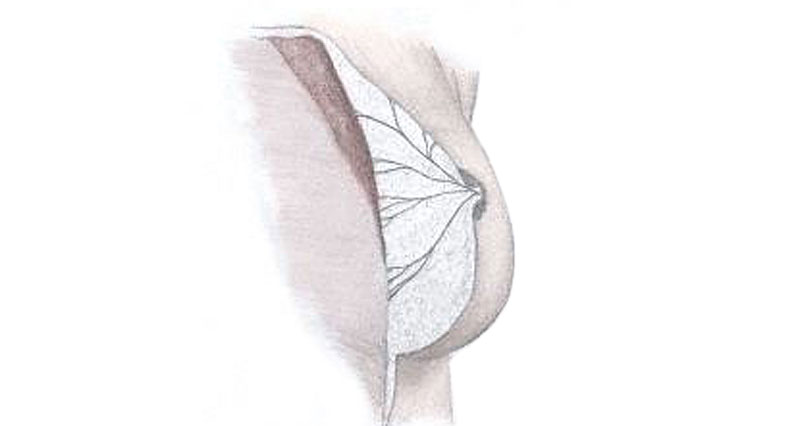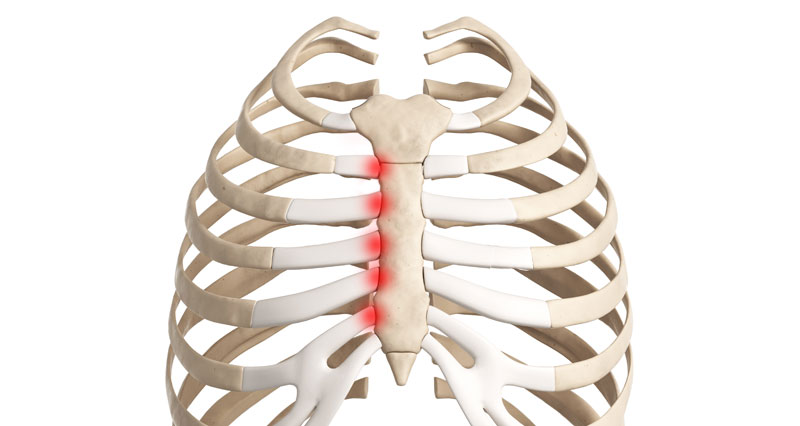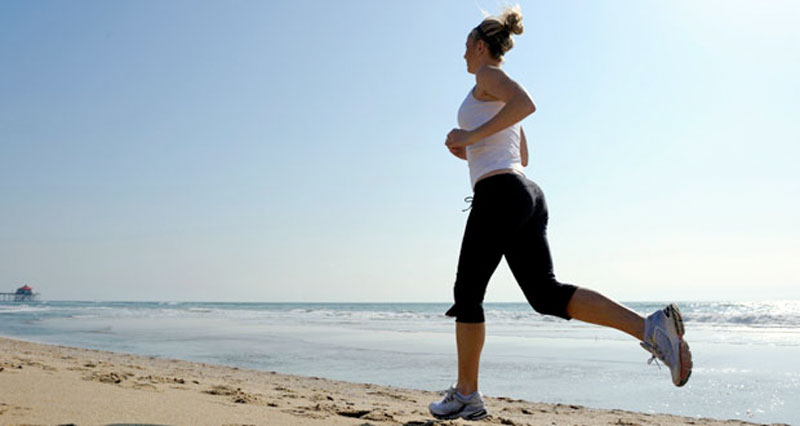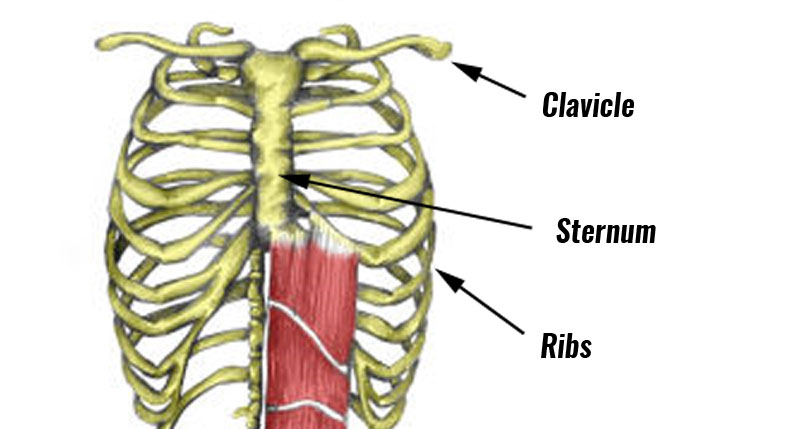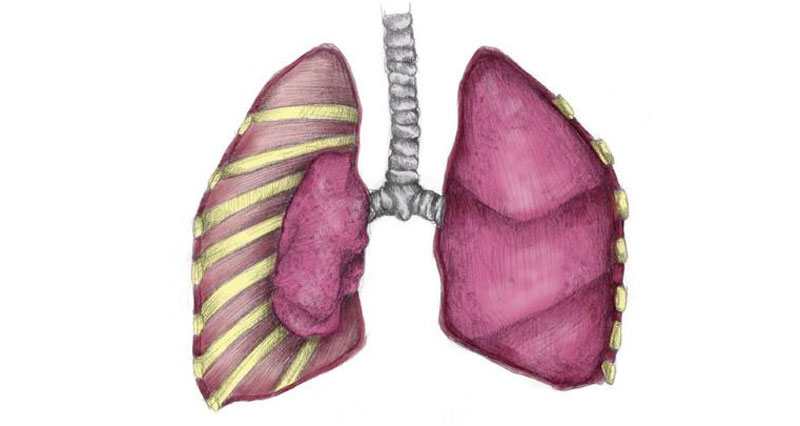Costochondritis or Tietze’s syndrome is a painful condition occurring at the joints between the ribs and the sternum (breastbone). Here we explain the symptoms, causes and treatment for Costochondritis.
Symptoms
- Symptoms include chest pain, specifically at the front of the upper chest, where the ribs attach to the sternum.
- Pain either develops or gets worse with activity, especially, from breathing deeply.
- Pressing in over the area in the middle of the chest, where the ribs meet the sternum will be especially tender.
- Diagnosis is usually based on the patient’s history and a physical examination.
- Blood tests and x-rays rule out other conditions.
What is Tietze’s syndrome?
Costochondritis or Tietze’s syndrome is inflammation of the attachment of the ribs to the sternum in the middle of the chest. Cartilage provides cushioning in the joints between the ribs and sternum. Damage to the cartilage results in pain and inflammation of the joint.
Tietze’s syndrome describes inflammation of usually just a single joint. However, the sternoclavicular joint may also be involved.
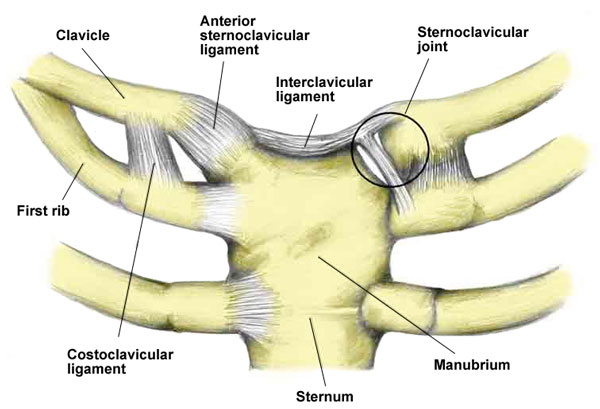
What causes Costochondritis?
This condition is most common in younger people and is an overuse injury. Overuse is thought to cause repetitive micro-trauma.
It is linked to rowers or results from road traffic accidents. Costochondritis also results from viral and bacterial infections. The 4th, 5th and 6th ribs are the most common joints for costochondritis to occur.
Costochondritis treatment
Treatment for Costochondritis consists mainly of rest. In particular, avoid aggravating movements or activities. As a result, you may just need to change your training for a while. Or you might need a period of complete rest to allow the inflammation to settle down.
Cold therapy
Apply cold therapy directly to the chest every hour for 10 minutes to help reduce pain and inflammation. Reduce frequency as your symptoms improve. Do not apply ice directly to the skin as this may cause ice burns. Wrap in a wet tea towel or use a commercially available cold pack.
Medication
A doctor may prescribe anti-inflammatory medication for Costochondritis such as ibuprofen. This helps reduce pain and inflammation. However, always check with a doctor before taking medication. Also, do not use the pain-killing effects to mask your injury so you can resume training or exercise.
Mobilising joints
Joint mobilizations may also be beneficial in recovering from Costochondritis. A professional therapist, Chiropractor, or Osteopath can help with this.
References & further reading
- Gregory PL, Biswas AC, Batt ME. Musculoskeletal problems of the chest wall in athletes. Sports Med 2002;32(4):235–50.
